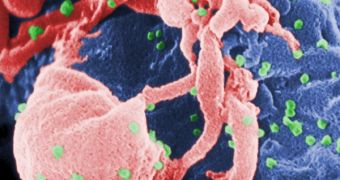Though some think that the Human Immunodeficiency Virus (HIV) cannot be attacked by the immune system at all, this is very wrong, say scientists. As a matter of fact, CD8+ killer T cells attack the virus as soon as it enters the body, even if the infiltrator is in very high concentrations. However, over time, these cells get "tired" and enter a state of exhaustion, where they do not attack the foreign organism anymore. By identifying the Tim-3 molecule, researchers believe they can prevent this from happening.
In these exhausted killer T cells, scientists noticed that Tim-3 levels were abnormally high, so they hypothesized that this molecule had something to do with the immune system stopping its attacks on the HIV virus. In fact, without immediate antiretroviral treatment – therapies to address the retroviral nature of the virus – these cells are overrun. When the drugs are administered in time, the onset of AIDS is significantly delayed.
"The mechanisms that lead to this exhausted state are not well known. We felt that if we could understand these mechanisms then we may be able to intervene and re-energize the immune system," said Brad Jones, a PhD candidate in Immunology at the University of Toronto, and co-author of the current study. Otherwise, "the immune system is eventually overwhelmed and progression to AIDS occurs."
In order to test their theory on the effects of Tim-3 on the CD8+ cells, the Canadian research team created a molecule capable of interfering with Tim-3 production. They noticed that "blocking the Tim-3 pathway rescued those cells and restored their ability to fight off infection," Mario Ostrowski, MD, associate professor in the Department of Immunology at the University of Toronto said.
"Our hope is this will enable those infected with HIV to turn the tide in the long battle between the immune system and HIV. Future studies which block Tim-3 signaling in animal models of chronic viral infection will help to evaluate the therapeutic potential of this approach," concluded Jones.

 14 DAY TRIAL //
14 DAY TRIAL //